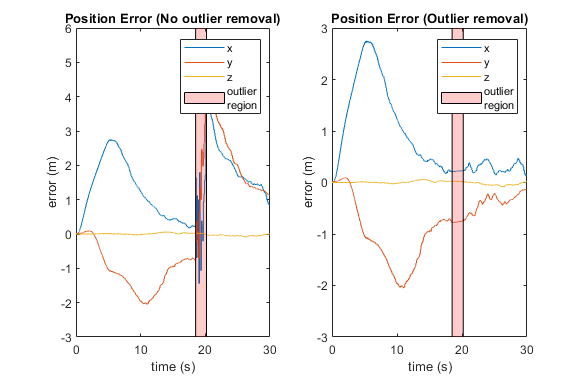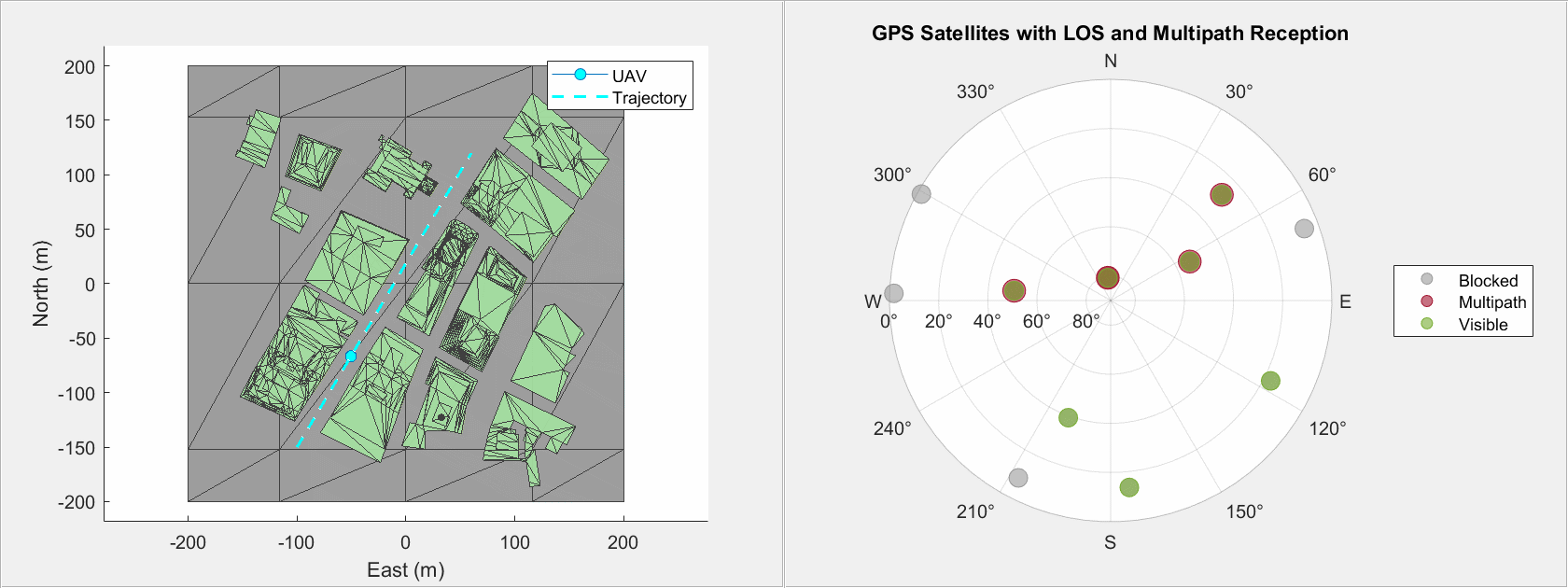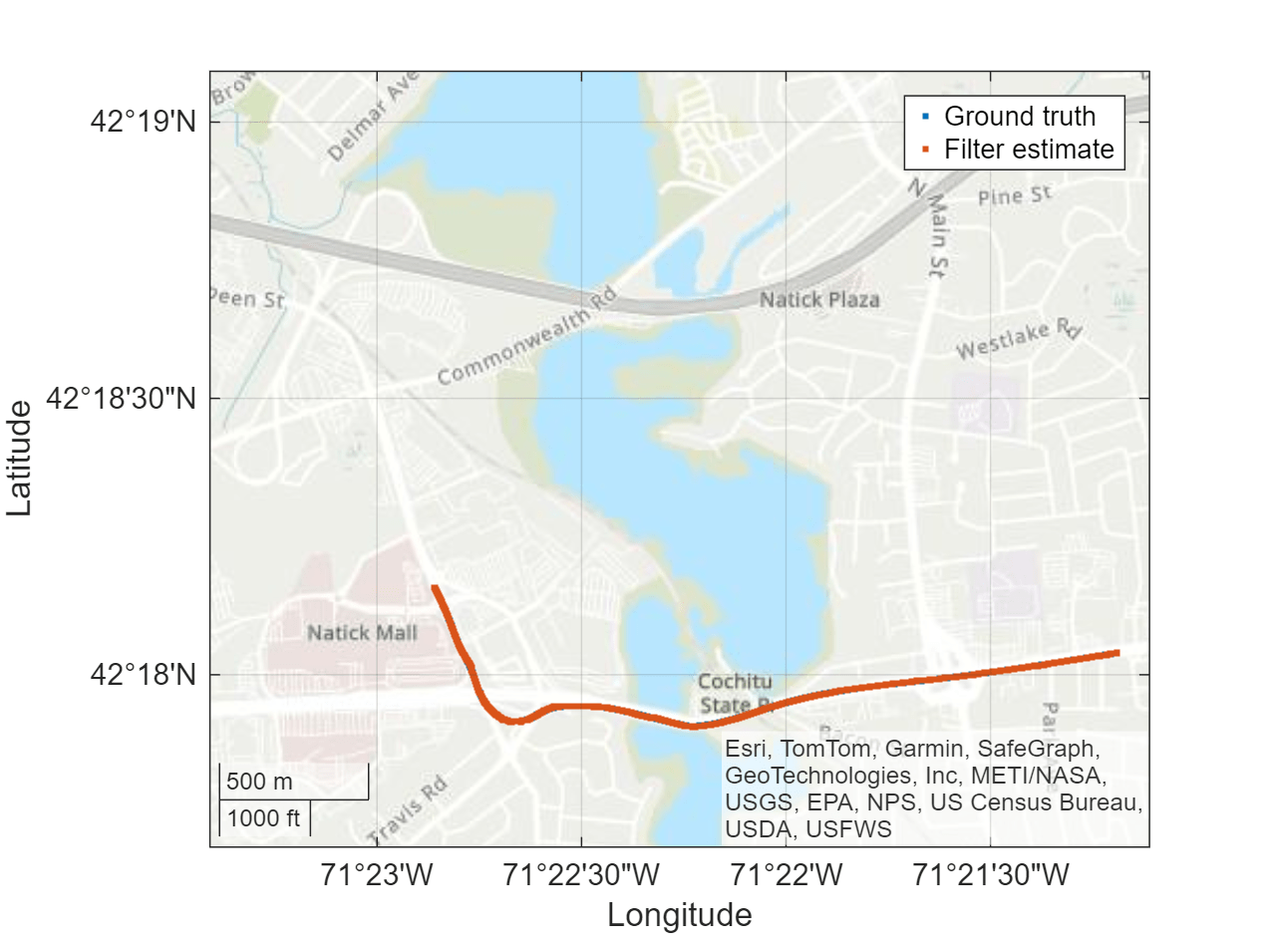GNSS Positioning
Compute positions from GNSS data by using the gnssconstellation and receiverposition functions.
Use the GNSS file reader functions, such as rinexread and semread
to read satellite navigation and observation data from RINEX, SEM, YUMA, and Galileo
almanac files.
Functions
Objects
gnssSensor | Simulate GNSS to generate position and velocity readings (Since R2020b) |
gnssMeasurementGenerator | Simulate GNSS measurements for scenarios (Since R2023a) |
gpsSensor | GPS receiver simulation model |
gpsdev | Connect to a GPS receiver connected to host computer (Since R2020b) |
nmeaParser | Parse data from standard and manufacturer-specific NMEA sentences sent from marine electronic devices (Since R2020b) |
Blocks
| GPS | Simulate GPS sensor readings with noise (Since R2021b) |
Topics
- GNSS Simulation Overview
Global Navigation Satellite System (GNSS) simulation generates receiver position estimates.
- Analyze GNSS Satellite Visibility
This example shows how to simulate and analyze GNSS satellite visibility at specified receiver positions and times using a GNSS/GPS ephemeris or almanac file.
- Simulate GPS Sensor Noise
This example shows how to use the GPS block to add GPS sensor noise to position and velocity inputs in Simulink®.
- Estimate GNSS Receiver Position with Simulated Satellite Constellations
Track the position of a ground vehicle using a simulated Global Navigation Satellite System (GNSS) receiver.
- Plot Position of GNSS Receiver Using Live NMEA Data or NMEA Log File
This example shows how to parse information from NMEA sentences and use the obtained information to plot the location.





